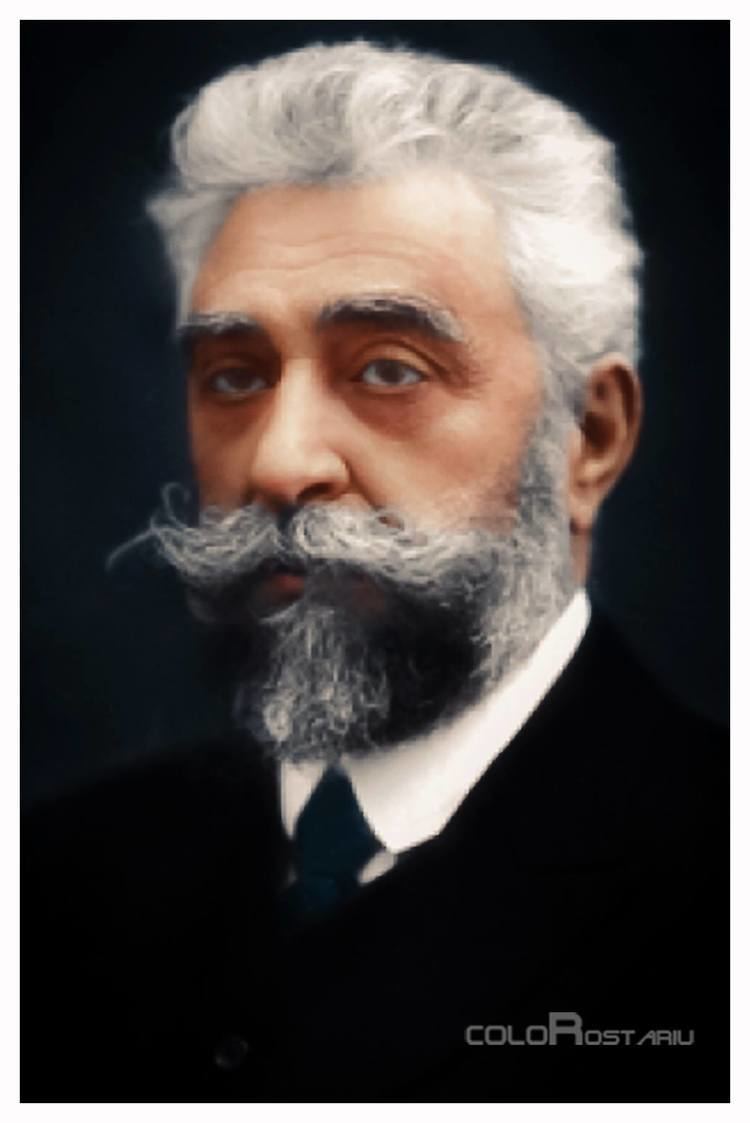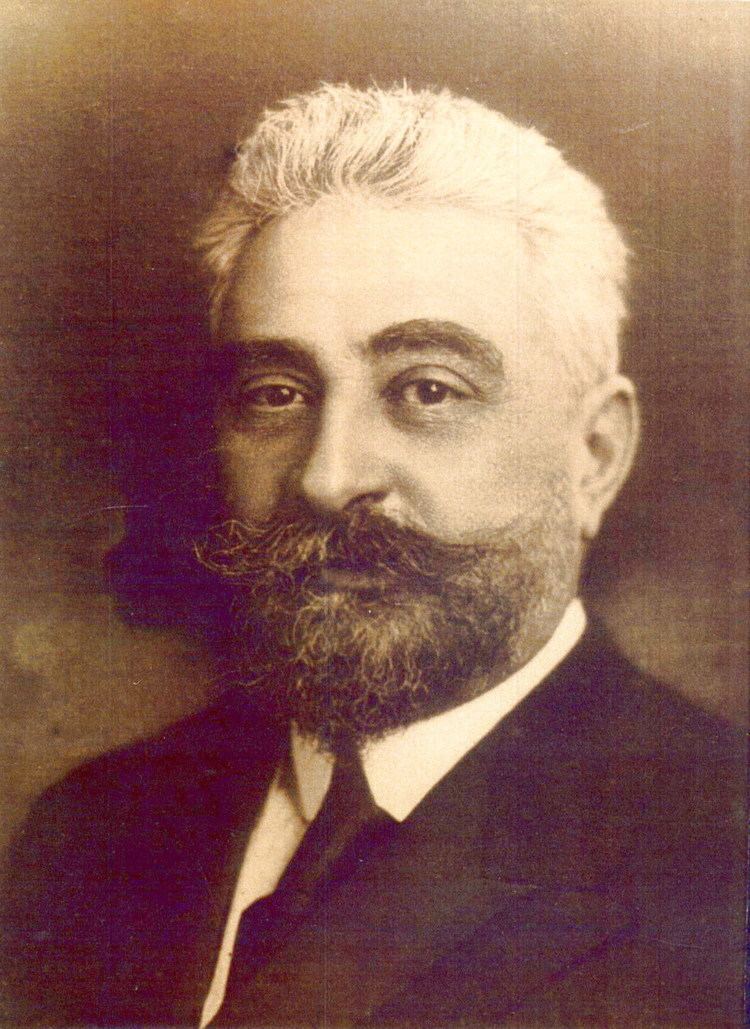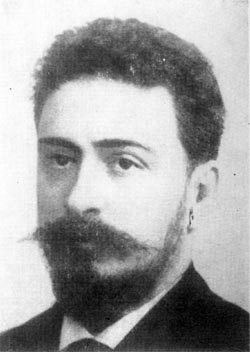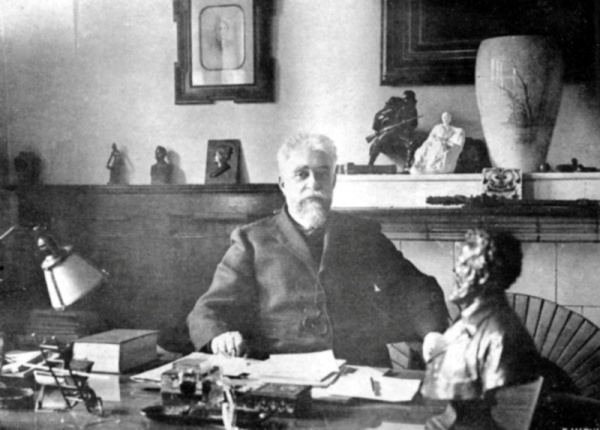Political party National Liberal Party Role Politician Party National Liberal Party | Profession engineer Name Ion C. Parents Ion C. Bratianu Children Gheorghe I. Bratianu | |
 | ||
Monarch Carol IFerdinandMichael Preceded by Dimitrie Alexandru SturdzaTitu MaiorescuConstantin CoandaTake IonescuBarbu Stirbey Succeeded by Petre P. CarpAlexandru AverescuArtur VaitoianuAlexandru AverescuVintila Bratianu Full Name Ionel I. C. Bratianu Born August 20, 1864Stefanesti, Romania ( 1864-08-20 ) Spouse Eliza Bratianu (m. 1907), Maria Moruzi-Cuza Education Saint Sava National College, Ecole Polytechnique | ||
Mărturii și Evocări. Ion I. C. Brătianu, autor al Marii Uniri - episodul 1 (05 04 2018)
Ion I. C. Brătianu ([iˈon brətiˈanu], also known as Ionel Brătianu; August 20, 1864 – November 24, 1927) was a Romanian politician, leader of the National Liberal Party (PNL), Prime Minister of Romania for five terms, and Foreign Minister on several occasions; he was the eldest son of statesman and PNL leader Ion Brătianu, the brother of Vintilă and Dinu Brătianu, and the father of Gheorghe I. Brătianu. Ion I. C. Brătianu's political activities after World War I, including part of his third and fourth term, saw the unification of the Old Romanian Kingdom with Transylvania, Bukovina and Bessarabia (see: Greater Romania). In 1923, he was elected an honorary member of the Romanian Academy.
Contents
- Mrturii i Evocri Ion I C Brtianu autor al Marii Uniri episodul 1 05 04 2018
- Mrturii i Evocri Ion I C Brtianu autor al Marii Uniri episodul 9 17 04 2018
- Early life
- Early politics
- World War I
- Third cabinet and support for Averescu
- Fourth and fifth cabinet
- References
Mărturii și Evocări. Ion I. C. Brătianu, autor al Marii Uniri - episodul 9 (17 04 2018)
Early life

Born at Florica, his father's estate in Ștefănești, Argeș County, he completed his secondary education at the Saint Sava National College in Bucharest (1882). He then volunteered for the Romanian Army's artillery, serving for six months before becoming a Second lieutenant. During his military service, Brătianu studied engineering. He left for Paris in 1883, and attended the Collège Sainte-Barbe, then took classes (without being a registered student) at the École Nationale des Ponts et Chaussées (1884–1889). Brătianu received an engineer's diploma, but not a licence to practice.

In 1889, he returned to the country and was assigned orders by the Army, being promoted to Lieutenant. Later in that year, he joined the Romanian Railways as an engineer, working under the leadership of Anghel Saligny.
Early politics

He became a member of the PNL in 1895, the same year he ran in elections and was elected to the Parliament of Romania by the Ist College (of the landed gentry) in Gorj County. In early 1899, he was in the majority that voted in favor of the entry of former members of the Romanian Social-Democratic Workers' Party into the PNL. He served as Minister of Public Works (March 31, 1897-March 30, 1899; February 14, 1901-July 18, 1902) and Minister of the Interior (March 12, 1907-December 27, 1908) - the latter assignment was prompted by the effects of the 1907 Peasants' Revolt. In 1909, he was elected head of the National Liberals, a position he was to hold until his death; he first became Prime Minister in January 1909, and kept the office until December 28, 1910.

Brătianu's policies moved the PNL towards an acceptance of land reform, but deliberations over the project continued until after World War I, with Brătianu himself showing reserves over projects that aimed to replace the 1866 Constitution of Romania with a fully democratic one. In 1913, he convinced his party to accept a moderate version of land reform, as well as the creation of a single electoral college - a measure which would have given more accurate representation to the peasant majority. Over the following months, these policies were approved on principle by King Carol I, and even by the Conservative Party.
World War I

The outbreak of the world conflict in 1914 brought a major polemic in Romanian society. The Conservatives oscillated between a neutral stance and participation alongside the Central Powers (to which Romania had committed itself); instead, the PNL called for an alignment with the Entente Forces. Despite the fact that Brătianu was again Prime Minister from January 16, 1914 to February 9, 1918, his policies in this respect were procrastinated. Initially, a decision on the matter was blocked by King Carol, until his death in September 1914. Afterwards, with the ascension of Ferdinand I (who was to remain a political ally of Brătianu for the rest of his life), the government started secret negotiations with the Entente, meant to condition Romania's participation with the granting of Austro-Hungarian lands with a majority Romanian population. In August 1916, Romania declared war on Austria-Hungary.

Minor advances into Transylvania were met with a Central Powers counter-offensive that swept through Oltenia and Wallachia, occupied Bucharest, and forced all governmental structures to take refuge in Iaşi. While Moldavia remained the only region under Romanian administration and the country increased its reliance on Imperial Russia - and then on the Russian Provisional Government, the Romanian Army was able to block further Central Powers' offensives in the battles of Mărășești, Mărăști, and Oituz. This situation was ended by the October Revolution in Russia and the Treaty of Brest-Litovsk between the Bolshevik government and the Central Powers: Romania saw itself without reinforcements, agreed to an armistice, and then signed the Treaty of Bucharest in May 1918.

In the meantime, Brătianu's had been replaced with the crisis government of General Alexandru Averescu, and this was soon followed by Alexandru Marghiloman's (chosen to negotiate the peace, as the German Empire was thought to be friendly towards Marghiloman). Nonetheless, Romania never did ratify the signed treaty, and denounced it in October 1918, immediately re-entering the conflict on the Entente's side. In November, the Compiègne armistice with Germany removed all legal value of the Bucharest Treaty.
Third cabinet and support for Averescu
The spectre of socialist agitation, which had led to incidents such as a major strike action in Bucharest in December 1918, brought about the fall of the Constantin Coandă cabinet, and Brătianu again occupied the position. He led the Romanian delegation to the 1919 Paris Peace Conference, where he was a vocal supporter of the union with Transylvania and Bukovina. Although successful in the negotiations for both, he resigned in 1919 since he would not accept a compromise on the disputed territories inhabited by Romanians that had become part of the Kingdom of Yugoslavia. However, Romania had registered other successes - notably, Russia's exit from the war had led to the union with Bessarabia (the Moldavian Democratic Republic).
Soon, the PNL found itself threatened by the political realities of a Greater Romania. The policy of alliances of the Romanian National Party (a mainly Transylvanian group) had brought the rapid formation of the cabinet of Alexandru Vaida-Voevod in December 1919; this cabinet, and especially its Peasants' Party group, supported a radical version of the land reform, leading to endless debates in parliament. At the same time, the People's Party, a new and strong populist movement under General Averescu, had begun a campaign for both an urgent land reform and for bringing about the prosecution of PNL politicians as agents of the economic hardships. Faced with a choice, Brătianu approached Averescu and offered PNL support for a People's Party cabinet in return for moderation.
Fourth and fifth cabinet
The PNL retreated its backing after finding a more convenient option in a Take Ionescu-led cabinet, and Brătianu became Prime Minister again from January 17, 1922 to March 30, 1926. The fourth Brătianu cabinet adopted the Constitution of 1923, a document which confirmed universal male suffrage and minority rights as first defined by the laws of 1918; because of the highly centralised model it favored, it drew suspicion from the Transylvanian politicians that it served the goal of a National Liberal-dominated Old Kingdom (especially after the constitution was approved of through a simple vote in Parliament). At the same time, the PNL cabinet began carrying out a national-level land reform.
As the elections of 1926 confirmed the rise of the National Peasants' Party (created as the union of the Romanian National and Peasants' parties), King Ferdinand again called on Averescu to form the government. By that moment, the general was thought by the PNL to be a convenient agent of its own policies, but Averescu's negotiations for a return of the disinherited Prince Carol after his father's imminent death made Brătianu switch his support to a broad coalition government under Barbu Ştirbey.
On June 21, 1927, Brătianu returned with his fifth and final cabinet. He died in Bucharest, from complications of laryngitis, and was replaced as Prime Minister by his brother Vintilă Brătianu until the calling of elections.
